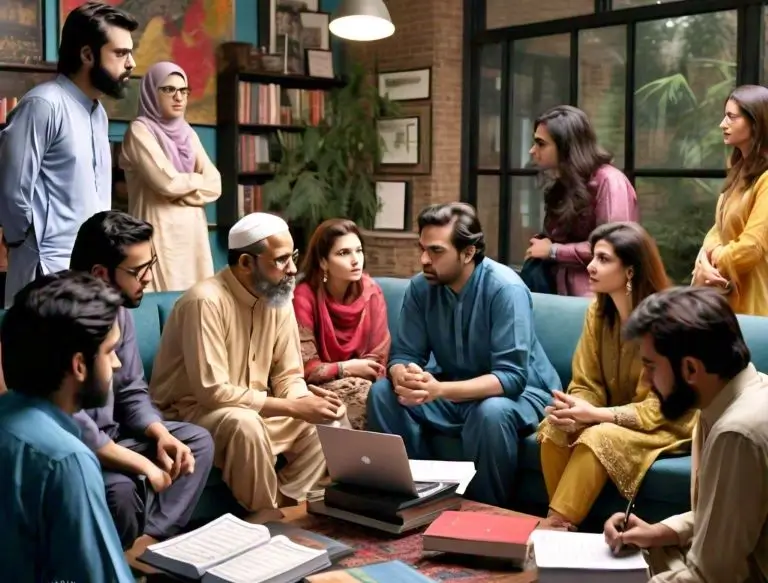In the vibrant tapestry of Pakistani society, where diverse cultures intersect to create a rich national identity, the role of media education in fostering cultural awareness and combating stereotypes has never been more crucial. As we navigate the complexities of our multicultural nation, from the bustling streets of Karachi to the serene valleys of Gilgit-Baltistan, the power of media to shape perceptions becomes increasingly evident.
Cultural diversity, the very essence of Pakistan’s strength, demands not just acceptance but a deep-seated respect for our differences. It is through this lens that we must view the pivotal role of media education in our schools, colleges, and universities. But what exactly does media education entail in the Pakistani context?
At its core, media education in Pakistan is about equipping our youth with the tools to critically analyze the media they consume daily. From the morning newspapers that grace our breakfast tables to the evening drama serials that captivate millions, from the tweets that spark national debates to the TikTok videos that go viral overnight—all these form the media landscape that influences how we view ourselves and others.
Media education in Pakistan is about equipping our youth with the tools to critically analyze the media they consume daily.
Consider, for instance, the portrayal of different ethnic groups in our popular dramas. How often do we see authentic representations of Balochi, Sindhi, or Pashtun cultures beyond stereotypical characters? Media education encourages our students to question these portrayals, to look beyond the surface, and to understand the complex realities of our diverse communities.
The impact of media on cultural stereotypes in Pakistan is profound and far-reaching. While our media has made strides in recent years, challenges persist. The stereotypical portrayal of women, the often-negative depiction of religious minorities, or the one-dimensional representation of certain professions—these are issues that demand critical examination. However, our media also holds the power to challenge these stereotypes. Documentaries showcasing the rich traditions of our northern areas, films that portray strong, independent women, or news reports that highlight the contributions of minority communities—all serve to broaden our cultural understanding.
In the classrooms of Lahore, Peshawar, or Quetta, teachers play a pivotal role in this process. Imagine a classroom in Multan where students are analyzing how different news channels reported on a recent cultural festival. The teacher guides the discussion, encouraging students to identify biases, question assumptions, and appreciate the diverse perspectives presented. This is media education in action, fostering cultural awareness in real-time.
The stereotypical portrayal of women, religious minorities, or certain professions demands critical examination.
But the journey is not without its challenges. In some conservative areas, discussions about certain cultural practices or beliefs might be met with resistance. Limited access to diverse media resources, particularly in rural areas, can hinder comprehensive media education. Yet, innovative educators across Pakistan are finding ways to overcome these hurdles. A teacher in a small town in Sindh might use local folk tales and compare them with their media adaptations to discuss cultural representation. In Islamabad, a university professor might assign students to create social media campaigns promoting intercultural understanding.
The benefits of such education are manifold. When students from different backgrounds in a classroom in Rawalpindi discuss how their communities are portrayed in popular media, it fosters empathy and breaks down barriers. A Punjabi student might gain new insights into Balochi culture, while a student from Gilgit might challenge stereotypes about urban life in Karachi.
Moreover, media education empowers our youth to be not just consumers but also creators of media. Imagine the impact when students from diverse backgrounds collaborate on a documentary showcasing the unity in diversity of Pakistani culture. This not only hones their critical thinking skills but also contributes to a more inclusive media landscape.
By embracing media education, we are not just teaching our students to be critical thinkers; we are nurturing a generation of culturally aware citizens.
As we look to the future, the importance of media education in fostering cultural awareness and reducing stereotypes in Pakistan cannot be overstated. In a world where information flows freely across borders, our youth must be equipped to navigate this complex media environment. They must learn to question, analyze, and appreciate the diverse narratives that make up our national story.
By embracing media education, we are not just teaching our students to be critical thinkers; we are nurturing a generation of culturally aware citizens who can bridge divides, challenge stereotypes, and contribute to a more harmonious society. From the classrooms of our educational institutions to the broader community, media education holds the key to unlocking a future where diversity is not just tolerated but celebrated.
As we continue on this path, let us remember that every step towards greater cultural awareness through media education is a step towards a stronger, more united Pakistan. In the words of our founding father, Quaid-e-Azam Muhammad Ali Jinnah, “We are many and we are one,” and it is through understanding and respecting our diversity that we truly honor this vision.
